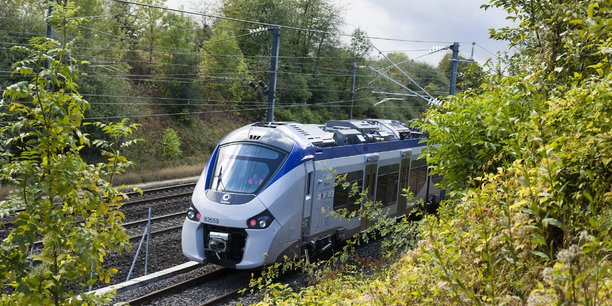Opening up to competition is not yet effective in Auvergne Rhône-Alpes (and not necessarily an option put forward, moreover, at this stage, by the new LR term of office of Laurent Wauquiez), but the latest episode could take , as such, a particular resonance.
This week, the SNCF has just informed the Region that it was going to immediately reduce the number of TER, in the order of 50% daily, on the Lyon-Grenoble line. And this, during the next fifteen days.
In return, the Region immediately stepped up to the plate by means of a press release on Tuesday, with a clear position: ” Such an announcement, overnight, for the Region and for travelers, which adds to a long list of dysfunctions, is not acceptable “, Estimates the regional executive, arguing that other significant service reductions would also affect other lines, such as Chambéry / Grenoble, Grenoble / Saint-Marcellin or Mâcon / Lyon.
The Region drives the point home and considers: “this situation is unacceptable for the thousands of travelers who use our TER lines every day, and unworthy of the historic company of public transport in France. It is up to SNCF to resolve its problems linked to the maintenance or repair of damaged trains ”.
All this, recalling in its letter that the Auvergne Rhône Alpes Region, “ mobility organizing authority », Allocates an annual budget of 800 million euros for rail traffic, including both the necessary investments in equipment and the annual agreement signed with SNCF.
An agreement in which the regional executive had also integrated the TER Grenoble / Lyon line among “ strategic lines subject to a bonus or penalty payment depending on train traffic in order to improve the regularity of this line “. In 2018, the Region also demanded that SNCF increase the workforce in its maintenance centers in order to limit the unavailability of its trains.
Maintenance issues raised … and Covid cases
On the SNCF side, the Auvergne Rhône-Alpes unit of the SNCF Voyageurs entity specifies that this decision is made, not because of work planned on the line, but a series of several factors affecting the rail operator in the Auvergne Rhône region. Alps since this fall.
It is indeed the conjuncture of ” several factors » which is pointed out by the SNCF to justify the division by two of the number of trains, circulating between Lyon and Grenoble: starting with a premature wear of certain axles, attributable according to the SNCF to an accumulation of dead leaves on the tracks each autumn, and which would thus increase the number of maintenance operations necessary for the movement of trainsets in complete safety.
But it is also an increase in shocks and collisions observed on this line (accidents to people but also with game, falling branches, etc.) which is advanced, because these incidents have even increased by + 60% between 2019 and 2021, according to SNCF Voyageurs.
Finally, a significant increase in the number of absences was recently recorded in its maintenance centers in Lyon and Grenoble, due to “ several Covid cases “(Precise figure not communicated), and would also be at the origin” a lack of qualified personnel “ to take charge of these maintenance operations.
“Currently, more trains enter the maintenance warehouses in Lyon and Grenoble than they leave,” says SNCF Voyageurs.
For the time being, the regional entity of the rail operator does not offer substitute solutions in the face of the division by two of traffic on the Lyon / Grenoble line, which also affects peak hours, but affirms “Work with the Region ” on this subject. It is also studying the possibility of transferring the maintenance of its trainsets to other centers, apart from Lyon and Grenoble, in order to speed up its operations.
However, also assigning other trains, currently in service on other lines in the region, with a view to making them run on this particularly affected track, is not one of the options studied at this stage, SNCF Voyageurs section.
Travelers and subscribers penalized
On the travelers’ side, the president of the regional branch of FNAUT, Nicolas Peyrard, notice that it is about “the first time that such a busy regional line has been stopped for such a long time for such a reason in recent years.”
Evaluated at 10,000 to 15,000 trips made per day four to five years earlier, the FNAUT does not have updated figures, despite requests addressed to the SNCF and the Region on this subject, but estimates that this number is higher today. , and above all, that the capacity of this line is much greater, given the traffic jams observed daily on this route at the entrances to the two metropolises. SNCF does not specify any figure on this subject.
However, Nicolas Peyrard sees, in this episode, an illustration of a lack of investments made in both rolling stock, but also technicentres. “Even if the SNCF has its part to play, the Region remains the leader in rail transport and we have noticed that for several years, when 100 trainsets are replaced, 90 are put back into service on the grounds that they have more. capacity. However, that does not allow us to have room for maneuver when we encounter problems of this type “.
Inasmuch as “second region in terms of passengers but also of absorbed traffic“, the FNAUT calls for an increase in the budget dedicated to investment in new trainsets and maintenance centers,”like what the Ile-de-France Region undertook a few years ago in connection with the Greater Paris dossier “, and considers that this budget should be sought on other posts.
“For example, the Region has announced the equipment of trains with video surveillance devices, while a survey of users conducted by SNCF did not bring up safety issues such as the number one concern of users”, cites Nicolas Peyrard as an example. As such, the president of FNAUT in Auvergne Rhône-Alpes considers that “opening TER traffic to competition would not change the episode we are currently experiencing “.


